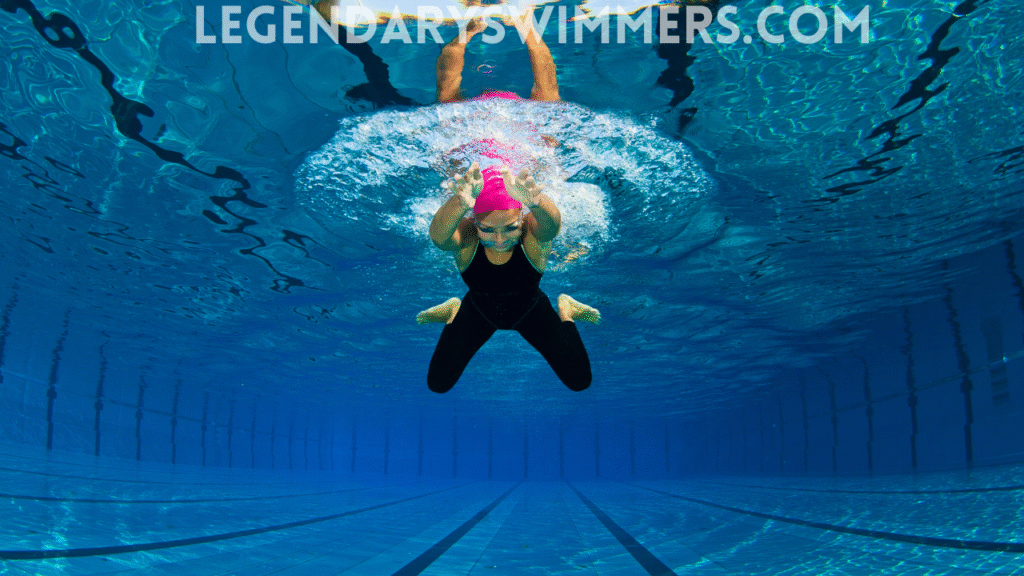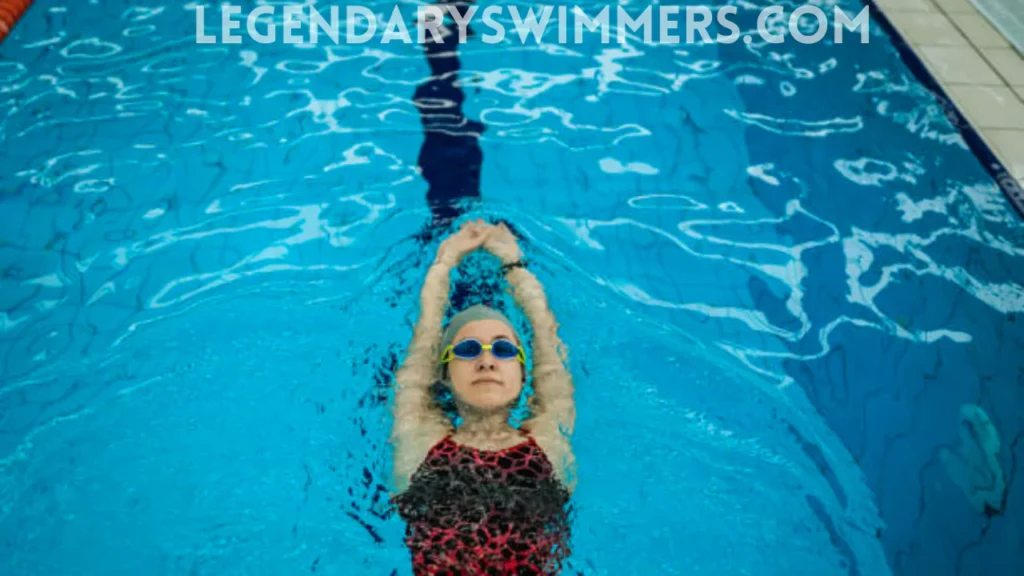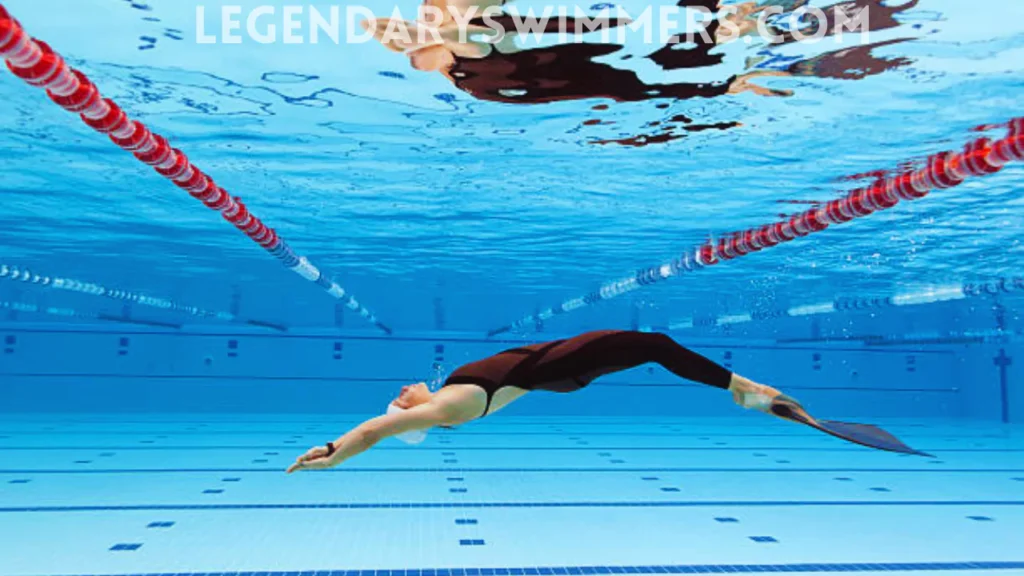![Does Swimming Actually Burn Calories? [Experts Tips]](https://legendaryswimmers.com/wp-content/uploads/2024/09/legendary-swimmers-1-66e2b271110e3-1024x576.webp)
Does Swimming Actually Burn Calories? [Experts Tips 2024]
- Updated:
Swimming has long been celebrated as one of the most enjoyable and effective forms of exercise. Its blend of relaxation and exertion makes it a popular choice for fitness enthusiasts of all ages. However, beyond its appeal as a leisurely activity, many people wonder if swimming is truly effective at burning calories. If you’ve ever dipped into a pool and wondered whether you’re getting a good workout, you’re not alone. We’ll provide expert insights and practical tips to help you maximize your workout.
How Does the Body Burn Calories?
Our bodies burn calories through a process called metabolism, where the food we consume is converted into energy. When you engage in physical activity, your muscles require more energy, thus increasing calorie burn. Exercise, including swimming, stimulates various metabolic processes that help burn off the calories consumed.
Swimming and calorie-burning
How Swimming Burns Calories
Swimming is a comprehensive workout that engages almost every muscle group in the body. Unlike some exercises that target specific areas, swimming offers a full-body workout due to its nature of moving against water resistance. This resistance requires significant energy expenditure, which translates into higher calorie burn.
Water’s density provides resistance that your muscles must work against, making swimming a more demanding exercise compared to some land-based activities. Additionally, because swimming involves both upper and lower body movements, it increases overall calorie expenditure.
Comparison with Other Exercises
![Does Swimming Actually Burn Calories? [Experts Tips]](https://legendaryswimmers.com/wp-content/uploads/2024/09/legendary-swimmers-2-66e2b46f1e6f6.webp)
When compared to other forms of exercise like running, cycling, or weightlifting, swimming can be equally or more effective in terms of calorie burn. The type of stroke you choose significantly affects the number of calories you burn. For instance:
- Running: A person weighing 155 pounds burns approximately 298 calories in 30 minutes of running at 5 mph. In comparison, a person of the same weight burns around 233 calories in 30 minutes of moderate swimming.
- Cycling: When comparing swimming and bicycling, a 155-pound woman burns approximately 260 calories during 30 minutes of moderate stationary biking. This is nearly 100 calories fewer than what she would burn during 30 minutes of intense swimming laps. However, if she increases her cycling effort to an all-out pace, she can burn around 391 calories in the same duration, which is comparable to the calorie expenditure from 30 minutes of butterfly stroke, which is about 409 calories. Swimming, however, engages more muscle groups and may provide a more comprehensive workout.
- Weightlifting: For a 170-pound person, swimming for 30 minutes can burn as many as 300 calories, whereas the same amount of time spent lifting weights typically burns about 134 calories.
The Cooper Institute, a nonprofit research organization, found that swimmers typically have lower body fat percentages and higher cardiovascular endurance compared to those who engage in land-based exercises. This suggests that swimming not only burns calories but also enhances long-term fitness and metabolism.
Why Swimming Is Effective for Health
Swimming is effective due to its low-impact nature combined with its full-body engagement. The buoyancy of water supports up to 90% of your body weight, greatly reducing the impact on joints and muscles compared to other forms of exercise like running or weightlifting. Despite being low-impact, it remains a high-reward exercise, providing an excellent cardiovascular workout while also improving overall mobility and flexibility.
Swimming engages nearly every major muscle group in the body, from your core to your arms, legs, back, and glutes. Each stroke—whether freestyle, breaststroke, or backstroke—requires coordination and strength from multiple muscle groups, enhancing overall tone and strength. Because water is denser than air, swimming also adds natural resistance, making muscles work harder and leading to improved muscle endurance and strength.
Swimming is not just good for your body—it’s also great for your mind. Studies have shown that regular swimming can reduce symptoms of anxiety and depression. The rhythmic nature of swimming can have a meditative effect, helping reduce stress and improve mood. The release of endorphins during swimming also promotes feelings of well-being and mental clarity. Additionally, swimming in water can help improve sleep quality, making it an effective remedy for insomnia.
Factors Affecting Calorie Burn in Swimming
Intensity of the Workout
The intensity of your swim greatly affects how many calories you burn. Swimming at a leisurely pace will burn fewer calories compared to a high-intensity workout. For example:
Leisurely Swimming: At a relaxed pace, you burn fewer calories due to the lower intensity and reduced resistance. This typically translates to around 200-300 calories per 30 minutes. Leisurely swimming focuses on maintaining a steady, comfortable pace, which is ideal for beginners or those looking for a less intense workout.
Vigorous Swimming: When you increase the intensity by swimming faster or using more demanding strokes like butterfly or sprinting, you can burn significantly more calories—upwards of 500 calories per 30 minutes. High-intensity workouts in the pool elevate your heart rate and challenge your muscles more, leading to higher energy expenditure and improved cardiovascular fitness. This intensity also promotes a higher afterburn effect, where the body continues to burn calories post-exercise.
High-intensity interval training (HIIT) in swimming involves alternating between periods of high-intensity swimming and rest or low-intensity swimming, further enhancing calorie burn.
The Role of Water Temperature on Calorie Burn
![Does Swimming Actually Burn Calories? [Experts Tips]](https://legendaryswimmers.com/wp-content/uploads/2024/09/legendary-swimmers-3-66e2b85d6097b.webp)
Dr. Hirofumi Tanaka, Director of the Cardiovascular Aging Research Laboratory at the University of Texas, points out that water temperature can influence how many calories you burn. Cold water forces the body to work harder to maintain its core temperature, leading to additional energy expenditure. Swimming in cooler water can increase the number of calories burned by up to 10%, as the body has to generate heat to stay warm.
This effect is particularly noticeable in open-water swimming, where the temperature can be much lower than a heated indoor pool. A study published in the Journal of Applied Physiology found that cold-water swimmers burned more calories than those swimming in warm water, largely due to the body’s efforts to stay warm.
Duration of the Swim
The length of your swimming session also impacts calorie burn. Generally, the longer you swim, the more calories you will burn. For effective workouts:
- Short Sessions: 20-30 minutes of intense swimming can be sufficient for a good calorie burn.
- Longer Sessions: Extended swimming sessions of 45-60 minutes or more can significantly increase calorie expenditure.
Swimming Techniques and Strokes
Mixing strokes can help maintain a higher intensity and prevent workout monotony. Different swimming strokes have varying impacts on calorie burn. For example:
- Freestyle: This stroke is one of the fastest and most efficient for burning calories.
- Butterfly: Requires more energy due to its demanding nature, resulting in higher calorie expenditure.
- Breaststroke: A moderate stroke that still provides a good workout but burns fewer calories compared to freestyle or butterfly.
- Backstroke: Generally burns fewer calories compared to more intense strokes but still offers a solid workout.
Experts from the American College of Sports Medicine (ACSM) emphasize that varying strokes during a workout can help maintain intensity while avoiding muscle fatigue, and maximizing calorie burn over time.
For a more in-depth analysis of these strokes and their benefits, [read here]
Individual Factors
Several personal factors affect calorie burn, including:
- Weight: Heavier individuals burn more calories during exercise compared to lighter individuals. The number of calories you burn during swimming can also vary significantly based on your age, weight, and fitness level. Dr. David Nieman, a professor at Appalachian State University and director of the Human Performance Laboratory, notes that heavier individuals burn more calories during swimming because they have to move more mass through the water. A 200-pound person, for example, can burn nearly 20% more calories than a 150-pound person swimming at the same intensity.
- Age: As people age, their metabolic rate slows down, leading to fewer calories burned at rest. However, swimming can help counteract this decline by maintaining muscle mass and cardiovascular health, which both contribute to a higher resting metabolic rate. “Swimming is a great cardiovascular workout that can burn a significant number of calories. It’s also a low-impact exercise that’s easy on the joints, making it a good option for people of all ages, including older adults.” Swimming for Heart Health from the February 2016 Harvard Heart Letter
- Fitness Level: Fitter individuals may burn fewer calories during exercise as their bodies become more efficient. Calculating approximate calorie burn can be done using online calculators that factor in weight, duration, and intensity of the swim.
Research conducted by the National Institutes of Health (NIH) confirms that tracking heart rate during swimming can provide a more personalized estimate of calorie expenditure, especially since water resistance can affect heart rate differently than land-based exercises.
Expert Tips for Maximizing Calorie Burn
- Incorporating Interval Training: Alternate between high-intensity sprints (e.g., 30 seconds) and short recovery periods (e.g., 1 minute). This boosts calorie burn and improves cardiovascular fitness. Start gradually and mix up intervals by varying strokes or speeds.
- Increasing Stroke Variety: Use different strokes to engage more muscle groups and maintain workout intensity, which helps prevent monotony and burn more calories.
- Adding Equipment: Use fins, paddles, or kickboards to increase resistance and focus on specific muscle groups. Fins enhance leg strength, paddles boost upper body work, and kickboards target leg endurance.
Regular swimming sessions are crucial for long-term calorie burn and fitness improvement. Set a schedule that allows you to swim consistently, whether it’s several times a week or daily
Common Myths and Misconceptions
Myth: Swimming Doesn’t Burn As Many Calories As Running
Contrary to popular belief, swimming can burn a comparable number of calories to running, especially when performed at high intensities. The key is to match the intensity of your swimming workout with that of your running routine.
Myth: You Need to Swim for Hours to See Results
Effective swimming workouts do not require hours of swimming. High-intensity swims of 20-30 minutes can be as beneficial as longer sessions. The quality of the workout often outweighs the duration.
Conclusion
Swimming is not only an enjoyable and accessible form of exercise but also a powerful tool for fitness. By understanding how swimming burns calories and following expert tips, you can optimize your workouts for maximum benefit.
Even for recreational swimmers, high-intensity workouts can have a substantial impact. For instance, an hour of lap swimming at a moderate pace can burn anywhere from 400 to 700 calories, depending on your weight and the type of stroke. In contrast, a leisurely swim or water aerobics session may burn around 200 to 400 calories in the same amount of time.
For those looking to enhance their swimming experience, Legendary Swimmers has curated a selection of high-quality products from leading brands to recommend for your workouts. Our collection includes Kiefer Rings for Hydrotherapy, Aqua Swim Bars, and Speedo Swim Training Kickboards, among other top-notch items. These products are designed to increase resistance, improve technique, and help you burn more calories during each session.
Our Recommended Products
 Speedo Unisex-Adult Swim Goggles Mirrored Vanquisher 2.0
Speedo Unisex-Adult Swim Goggles Mirrored Vanquisher 2.0
 Speedo Swim Training Kickboard Adul
Speedo Swim Training Kickboard Adul
 Speedo Unisex-Adult Swim Training Fins Rubber Short Blade
Speedo Unisex-Adult Swim Training Fins Rubber Short Blade
References

Natasha Nicole Leyva
Hi, I’m Natasha—swimmer, coach, and aquatic fitness enthusiast. My journey began in New Zealand after a professor recommended swimming to help with a knee injury. The low-impact nature of swimming worked wonders, and it quickly became my favorite form of exercise. This passion grew into a thriving swim academy, and soon, requests for aquatic fitness classes started pouring in. After becoming certified, I realized how powerful water workouts could be for recovery and fitness. Now, I share my expertise here to help others experience the benefits of aquatic movement—whether for recovery, fitness, or fun!







